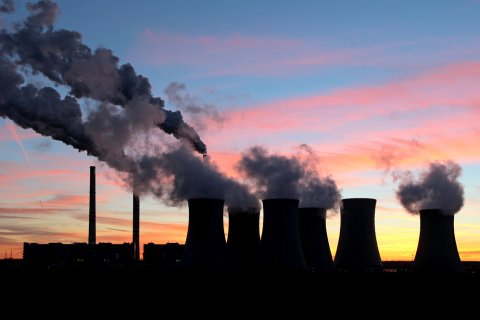Exploring the future of coal power in water scarce Asia
Many aspects of modern energy systems necessitate access to reliable water resources. The findings of a new study involving IIASA and Utrecht University researchers, among others, shows that Developing Asia’s long-term electricity generation plans – which relies heavily on coal power generation – could be significantly impacted by regional changes in the availability of water under climate change.

Thermal power plants that run on natural gas, nuclear power, and coal accounted for 75% of global electricity generation in 2017. Asia in particular, is highly dependent on coal power for electricity supply, and demand is expected to grow in coming years. These plants, however, generally need water for cooling, which is increasingly constraining their electricity output because of low water availability or high intake water temperatures – sometimes both.
Decrease in usable capacity of thermal power generation
As population growth and economic development continue to drive both water scarcity and electricity demand in Asia, the still increasing use of coal power plants presents a problem. The effects of climate change are further exacerbating water shortages and increasing air and water temperatures, which has led experts to suggest that the usable capacity of thermal power generation could decrease globally by around 8–16% on average by the middle of the 21st century.
Impact of expected changes in the hydroclimate
In their study published in the journal Energy and Environmental Science, researchers from IIASA, Utrecht University, Ohio State University and the Institute for Integrated Energy Systems explored the extent to which current and future coal power plants in the region will be impacted by expected changes in the hydroclimate. This is the first study of this type and scale for the Asia region to use ultra-high-resolution hydrology to consider not only current, but also planned power plant capacity.
The competition between the different sectors for the limited available water clearly highlights that bold choices need to be made.
High-resolution hydro-climate simulations
“We investigated the electricity planning problem in Developing Asia”, says first author Yaoping Wang, who started her work on the topic as part of the 2017 IIASA Young Scientists Summer Program. “We used high-resolution hydro-climate simulations and datasets of the existing and planned power plants to quantify the water constraints on coal-fired electricity generation at the power-plant level under various climate and energy planning scenarios.”
Bold choices need to be made
Hydrologists from Utrecht University provided the hydrological discharge and water temperature simulations that form the boundary conditions of the research. Dr Niko Wanders explains: “This research makes it clear that coal-fired power plants do also have negative side effects for sustainable water use in the future. The competition between the different sectors for the limited available water clearly highlights that bold choices need to be made if we would like to have sustainable water use, while at the same time keeping existing coal-fired power plants.”
Reference
Wang Y, Byers E, Parkinson S, Wanders N, Wada Y, Mao J, & Bielicki J (2019). Vulnerability of existing and planned coal-fired power plants in Developing Asia to changes in climate and water resources. Energy and Environmental Science DOI: 10.1039/c9ee02058f

